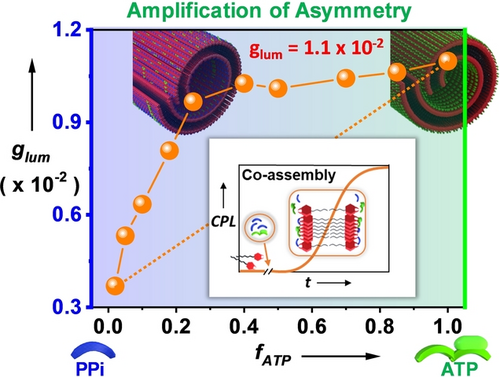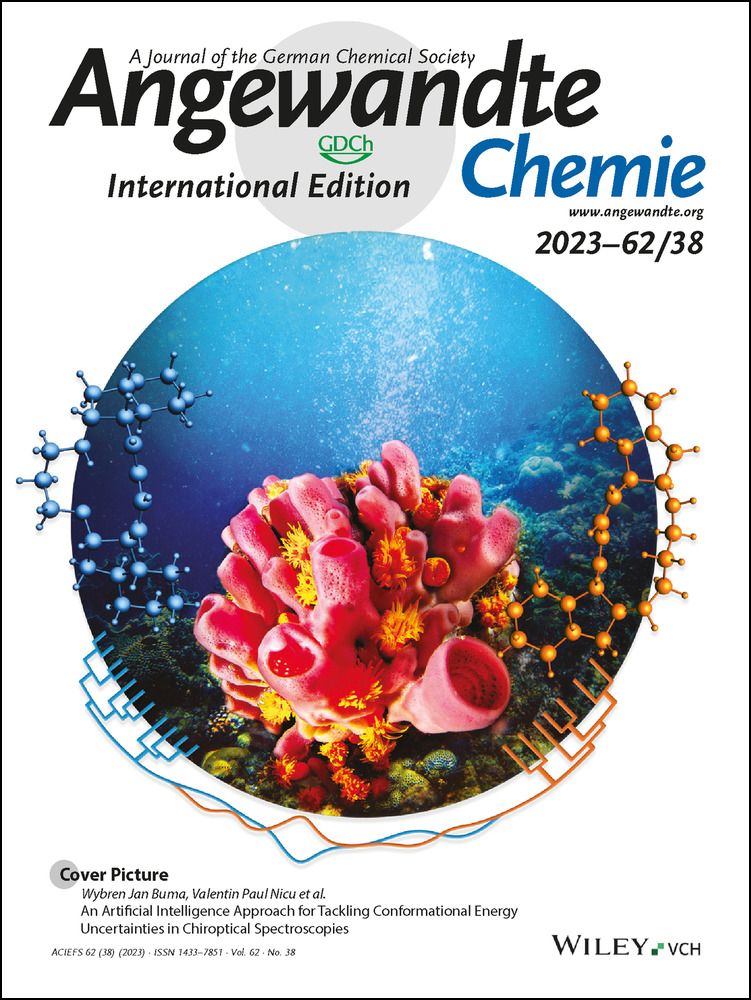Chiroptical Amplification of Induced Circularly Polarized Luminescence in Nucleotide-Templated Supramolecular Polymer
Graphical Abstract
An unprecedented bioinspired, chiroptical amplification of induced-circularly polarized luminescence (ICPL) is demonstrated in ATP-driven cooperative supramolecular polymers. Amplification of asymmetry is achieved using a mixture of ATP and achiral pyrophosphate (PPi) guests, whereas the high luminescence is ensured by the aggregation-induced emissive nature of the monomers.
Abstract
Efficient circularly polarized luminescence (CPL) from purely organic molecules holds great promise for applications in displays, sensing, and bioimaging. However, achieving high dissymmetry values (glum) from organic chromophores remains a significant challenge. Herein, we present a bioinspired approach using adenosine triphosphate (ATP)-triggered supramolecular polymerization of a naphthalene diimide-derived monomer (ANSG) to induce CPL with a remarkable glum value of 1.1×10−2. The ANSG molecules undergo a templated, chiral self-assembly through a cooperative growth mechanism in the presence of ATP, resulting in scrolled nanotubes with aggregation-induced enhanced emission (AIEE) and induced CPL. Furthermore, we demonstrate the concept of chiroptical amplification of induced CPL by efficiently amplifying asymmetry using a mixture of chiral ATP and achiral pyrophosphate. This innovative approach opens numerous opportunities in the emerging field of circularly polarized luminescence.
Open Research
Data Availability Statement
The data that support the findings of this study are available in the supplementary material of this article.





